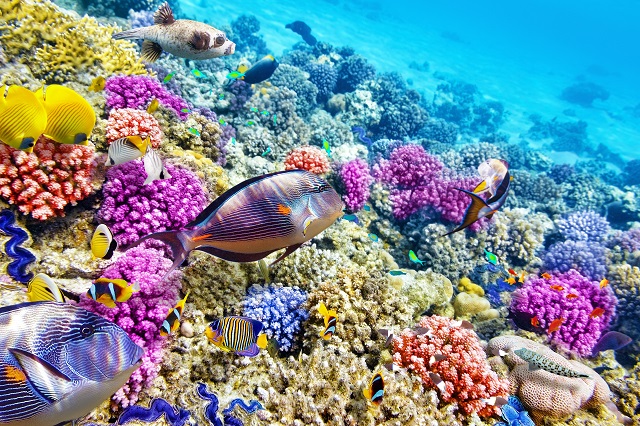
Coral reefs are home to some of the most spectacular creatures the planet has to offer
Image credit: Brian Kinney / Shutterstock.com
An amendment was approved by the Mid-Atlantic Fishery Management Council last week for the creation of “deep sea coral zones” in the Mid-Atlantic. This will serve as a measure to protect deep sea corals vulnerable to damage from bottom-tending fishing gear (such as trawlers).
If the Secretary of Commerce grants their approval, the zones will be formed in the regions where corals have been found or are likely to be present.
The use of any kind of bottom-tending fishing gear including traps, bottom longlines, dredges and trawls will be forbidden within these zones. The total area assigned for the deep sea coral zone is over 38,000 square miles – almost as large as Virginia.
Most deep sea corals are delicate and grow slowly, making them susceptible to damage from fishing gears that scrape the seabed. As granted by the Magnuson-Stevens Act, regional fishery management councils retain the authority to designate zones and time-periods when fishing may be limited to preserve deep sea corals. The proposal has been in place since 2007, however the Mid-Atlantic Council will be the first of all the eight councils to implement this plan to create deep sea coral zones.
This historic action by the Council was made possible by the cooperation of a broad group of fishermen, advisors, coral researchers, conservation groups, Council members, and staff.
Many people deserve credit for their collaborative efforts to refine the coral protection areas in a way that protects deep sea corals in our region while accommodating current fishing practices.
Rick Robins - Council Chairman
The measures which the council approved included the selection of fifteen “discrete coral zones,” either known to have coral present, or in which there is a high likelihood of their presence. These zones are mostly present around underwater canyons or slope regions through the continental shelf edge.
The deep sea coral experts, industry members, members of the Council’s advisory panels and other stakeholders together designated the boundaries of the discrete coral zones. Additionally, the Council members voted to create a “broad coral zone” covering a wide area starting from the 450m depth contour and extending to the 200-mile limit of the Exclusive Economic Zone.
The prohibition of all types of bottom-tending gear will apply in both the discrete and broad deep sea coral zones. The amendment also permits vessels to move via the coral zones when fishing gear is unavailable for immediate use or stowed.
Great Barrier Reef | Exploring Oceans
Exploring Oceans: the Great Barrier Reef
Video credit: National Geographic / Shutterstock.com
While the amendment will tweak the fishery management regulations for Butterfish, Squid, and Atlantic Mackerel, the limitations are also applicable for any federally regulated fishing activity taking place in the proposed areas of the Mid-Atlantic region.
The Council suggested having the federally managed fisheries free of all potential exemptions during the meeting, and opted to release the red crab fishery from all gear-related restrictions. The fishery, consisting of two full-time vessels, would be free of all gear restrictions in discrete coral zones for a minimum of two years and indefinitely in the broad zones.
Secretarial review of the amendment will include a complete assessment of the proposed restriction by NOAA Fisheries followed by further opportunities for public comment.